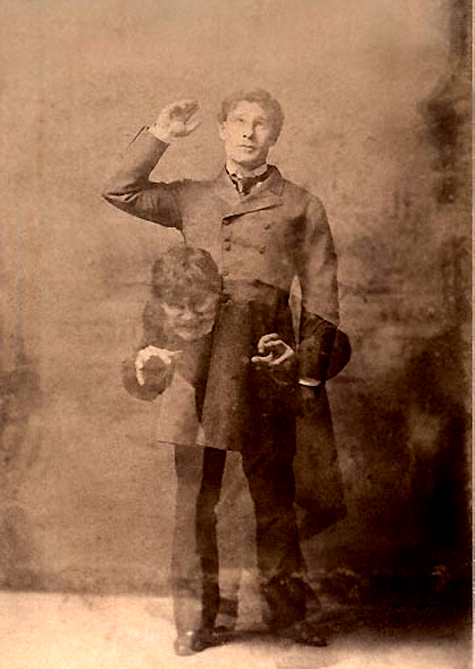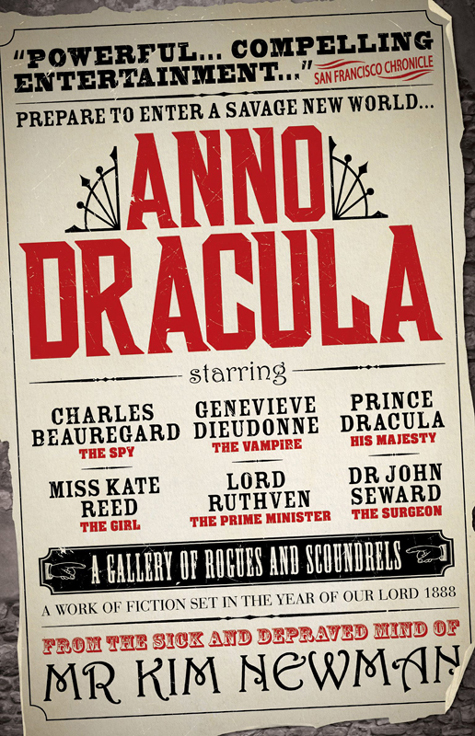Many of our classic monsters were born in the dark and foggy streets of Victorian London. Literary or legendary, so many monsters seem to have been conjured up or at least written prominently about in that wonderful time. It’s no wonder that steampunk is also a product of that fertile era, the birthing ground of science fiction and horror, kindred genres.
While Mary Shelley’s Frankenstein, arguably the first science fiction story, was written in 1815—and published in 1818 thereby falling slightly short of Victoria’s reign—the steampunk potential of the story is by far the most profound. Shelley essentially invented the mad scientist, reanimation, and the most classic monster of all time. The story in its original form is already quite steampunk, depending on your definition, but if one adds mechanical elements to the creature’s anatomy, it takes on a decidedly steampunk aspect. This possibility has not been lost on steampunk enthusiasts. Two separate makeup artists have recently created “Steampunk Frankenstein” designs. Anthony Pepe, a contender in the first season of Face Off has even been nominated for an Airship Award for his amazing head design. Rayce Bird, with the help of several other Face Off alums and Thomas Willeford of Brute Force Studios, created an entire creature.
Another of the iconic monsters is the mummy, and while many of the more famous tales take place in the 1920s, one of the earliest published stories is The Mummy!: or a Tale of the Twenty-Second Century, written in 1827 by Jane C. Loudon. While the story is neither well-known nor a great work of literature, it is proof that the Victorians were as intrigued by the tale of an Egyptian mummy returning to life as we are today.

The Strange Case of Dr Jekyll and Mr. Hyde by Robert Louis Stevenson (1886) gave us the delicious dilemma of a man’s very nature turning against him in a most monstrous form. The intriguing concept of a split personality, brought on by elicit elixirs, lends itself to all kinds of fabulous twists and turns.
In 1888, the Victorian monster took a more tangible form. Jack the Ripper, a serial murderer, was never caught but inspired artists and writers to this very day with his grisly deeds. If his murderous acts or famed getaways were aided by mechanical means, the stories could be quite steampunk indeed.

The lesser known Jack, Spring Heeled Jack was thought to have been sighted from 1838 to 1904, and his legend remains even more mysterious, though no less inspiring to writers and artists, including those with a steampunk inclination. Warren Ellis wrote him as a main character in his wonderful graphic novel series Captain Swing and the Electrical Pirates of Cindery Island. Burton and Swinburne also wrote a novel about him entitled The Strange Affair of Spring Heeled Jack.
H.G. Wells’ novel The Invisible Man introduced another literary icon to the classic monster roster in 1897. His tale of science gone awry, ponders the ethics of watching when no one will know and the problems inherent in being forever unseen. There is a steampunk invisible man movie rumored to be in the works.
Finally we come to perhaps the most famous of all monsters, Vlad Tepes or, Count Dracula. While vampire lore can be traced back far earlier than the reign of Queen Victoria or the age of steam, the seminal work about vampires and specifically Dracula was penned by Bram Stoker in 1897. Stoker’s Dracula has been the inspiration for countless tales throughout the years. Author Kim Newman saw the potential for a rich altered history story when he wrote Anno Dracula in which Dracula usurps power in England by marrying Queen Victoria. Fittingly, his story also incorporates almost all the famous fictional and not so fictional monsters that we have been exploring.

Filmmakers have seen fit to use Victorian monsters as inspiration in two major films with amazing potential, but very disappointingly cheesy end results: The League of Extraordinary Gentlemen and Van Helsing. Both could be called steampunk due to the time period, weaponry and gadgets, but neither is particularly good overall. LoEG even introduces Dorian Gray as a lesser known but effective monster of the day from a story by Oscar Wilde (1890).
This time of year we are inundated with images of all the classic monsters in garish, cartoony forms, but take a moment to think back to their roots in the dark and foggy streets of Victorian London where they were first given life, the same streets that give rise to the roots of steampunk. Some will say that many of these creatures are already steampunk, but my own personal definition requires more than just being in the right time period. Steampunk needs to be based more science fiction than fantasy for me. Frankenstein, Mr. Hyde, and the Invisible Man all have the benefit of being products of mad science, a main stay of steampunk stories, but what about Dracula? Or the Mummy? How do you make their tales more steampunk than simply supernatural? I leave it to you to steampunk up these classic tales. There is glorious, ghastly potential for steampunk and Victorian monsters to meld and become even more monstrous.
Diana Vick is a writer, illustrator, prop maker, costumer and con runner in Seattle. You can read her blog Tea and Automatons or check out her steampunk store, Steamporium on Zazzle. Her work appeared in 1,000 Steampunk Creations. She and her husband run Steamcon, the oldest steampunk convention in the U.S. Steamcon’s theme this year is Victorian Monsters as a nod to all the classic creatures.









